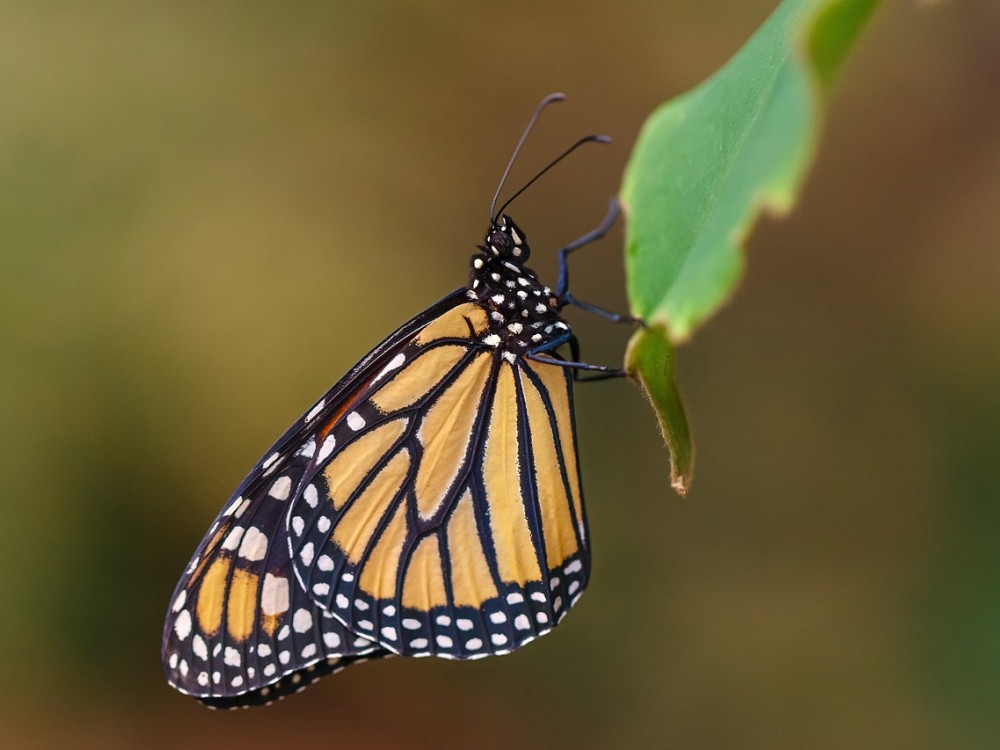A 'very strange year'
Monarchs are slowly leaving the overwintering sites as more mating pairs are observed, a harbinger of the season. Reports from the field give us a glimpse of monarch activity at three sites in California this winter.
Reports from the Field
Marylou Barker Gooden, Pismo Beach, California
Most recent count was 104 on Jan. 23. Most of January felt like the last couple weeks of a regular season. Many days we could not find clusters, but would see 20-30 monarchs flitting around between 1 p.m. and 3 p.m.
On some days we would find small clusters (20-40), but not in the places we found them in previous years.
I have volunteered in the grove for 44 seasons and have never had a January where we could not find clusters consistently. Even in 2020 our small cluster stayed together until February.
We observed mating behavior all season, another difference from years past. This past week with colder temperatures was the only week since mid-October that I did not see mating pairs.
Very strange year indeed.
Stephanie Turcotte, Pacific Grove, California
I write this last report of the season with a heaviness in my heart, considering the report that Xerces just published with our final Thanksgiving count for the western population. While I know it is really important data to collect weekly (numbers/location), it was a difficult season to report on. There is a part of me that can’t help feel like we failed the monarchs in our habitat.
What gives me hope is that while we had small numbers this season, we didn’t have zero. Our final count this morning was seven monarchs. There were two monarchs together on “Nexus," the popular Monterey pine inside the grove that was host to thousands of monarchs in 2022 and 2023. I think they were there to help us digest the fact that this is the end of the season for us in Pacific Grove. And the remaining five monarchs were on outer branches of the large, established eucalyptus tree in the southeast corner, four together and one loner.
It has been cold in Pacific Grove the last week. There were threats of freezing temperatures in surrounding areas. We are supposed to get rain for the next few days. It is so dry everywhere. Hopefully, wherever the monarchs are that spent the winter with us along the California coast, find what they need to bolster the numbers for the generations that will bring us monarchs next season.
Finally, I am relieved that Xerces finally made public the devastating findings of the monarchs we discovered last season that were suffering from pesticide poisoning so close to our habitat. It was uncomfortable to have had that experience, be confident in what I observed, and then have to wait a full year for it to be shared. My hope is that we, as a community, will do better in this time that we have with caring for our critical habitat before any monarchs begin to look for a safe and beneficial place to spend their winter.
Of course, if I see anything monarch-related worth sharing, I will.
Diana Magor, Santa Cruz, California
Over the past week, we’ve done three counts at Lighthouse Field.
On Monday, Jan. 27, mid-morning, temperature 51°F, Tara Johnson began taking photos of five mating pairs and one tagged monarch from Elkton, Oregon. She counted 781 monarchs, an increase from the previous week’s count on Jan. 24 of 707 (Liana Crabtree and me).
On Jan. 29 at 2 p.m. I counted 766, most of which (505) were clustered under Monterey Cypress branches on tree 7 inside the grove. (I have been counting in the early afternoon lately as the light has been better for photos of clusters inside the grove and I check my counts with photos.)
On Jan. 30 at 2 p.m. I counted 726, once again with the vast majority (560) in the same location under the same Monterey Cypress tree 7. There were 110 under a cypress on the sunny south side of the grove (tree 14) where they had clustered and been sunning in much larger numbers during the warm afternoons we had in January. It appears that those that have been clustering in that exposed location have been moving to the very sheltered spot under the interior cypress (tree 7) as the afternoon temperatures have cooled into the 50s this week and the nighttime temps have remained very cold (low 40s). Rain started at 2 p.m. today and is expected to continue until Feb. 5, with more rainy weather in the forecast after one clear day. There are still some females at Lighthouse Field, and we will continue to monitor that site until no more females are found there.
Beth Bell and John Dayton surveyed Moran Lake on Jan. 26 and found only 110 monarchs. I suspect that some of the monarchs at other locations such as Moran Lake may be coming to Lighthouse Field for better shelter from the cold and rain of the cypresses than the eucalyptus. We have not seen many monarchs on eucalyptus for the past month or during stormy or windy weather, except during warm sunny periods when they are nectaring on the eucalyptus flowers.
As you probably all know by now, the results of the early and mid-season overwintering counts were announced by Xerces yesterday. In summary, the total for the early season was 7,601 monarchs. Mid season (Nov. 16-Dec. 8) was 9,119. That count for ~220 overwintering sites surveyed this season was less than the number I counted at Lighthouse Field alone on Dec. 9, 2023! Lighthouse Field had the highest numbers in the state in all three counts at a maximum of 1,500. The late count from Dec. 28 to Jan. 12 was approximately 5,200. (The final number is still under review).”
On. Feb. 3, from 2:10 p.m. to 3 p.m., the temperature was 58°F with overcast, cool.
Tree 14: One mated pair, 60 monarchs
Tree 12W: Three clusters, 30 monarchs
Tree 12 S: Two monarchs
Tree 7: 594 monarchs
Total: 686 monarchs
Zero flyers
Zero dead monarchs”
Wanted: Monarch Sightings
Thank you to Marylou Barker Gooden, Stephanie Turcotte and Diana Magor for their reports from the California overwintering sites.
Winter monarch reports are important wherever you live! Please send in your sightings to help us present a balanced report of where monarchs are appearing each week. Report adult monarchs, eggs, or larvae to Journey North weekly. Your detailed description of what you see can include, but is not limited to, the monarch’s gender and activity. If known, include the type of flowers if they are nectaring or milkweed type if laying eggs. Photos are encouraged and welcomed with all your reports.
Gail Morris is the Coordinator of the Southwest Monarch Study (www.swmonarchs.org). She is also a Monarch Watch conservation specialist, the vice president of the Central Arizona Butterfly Association and sits in several western working groups. The Western Monarch News is based on comments provided to Gail Morris. We hope to increase the number of sightings and therefore photos and comments entered into Journey North. We rely on the volunteers who communicate regularly with Gail and who agree to participate in our effort to increase awareness of the population of western monarchs. You can reach her at gail@swmonarchs.org



